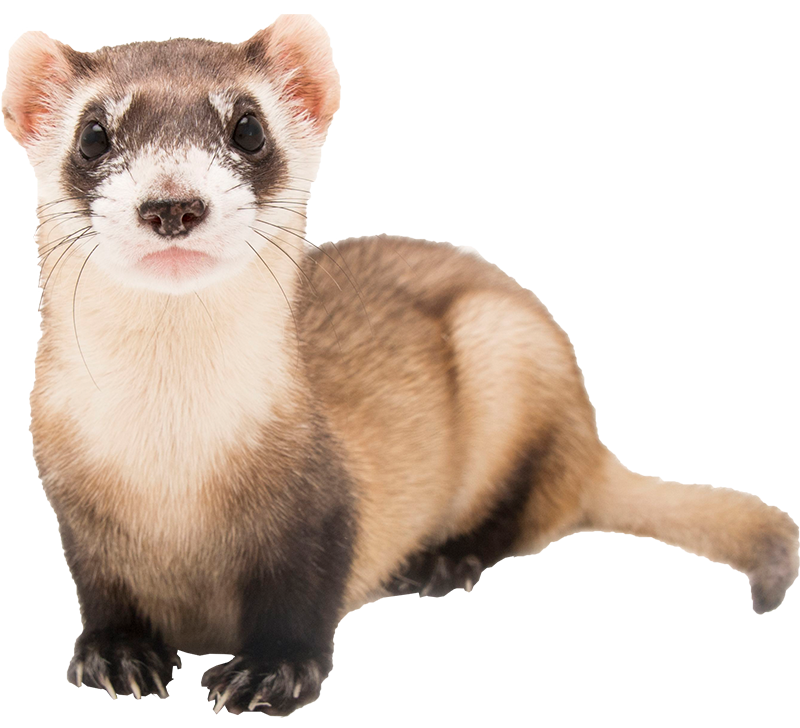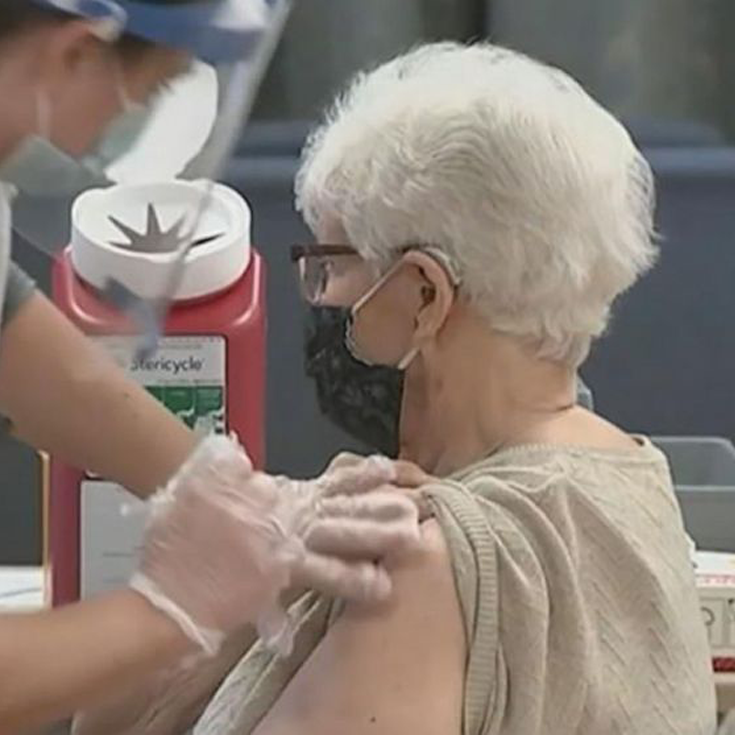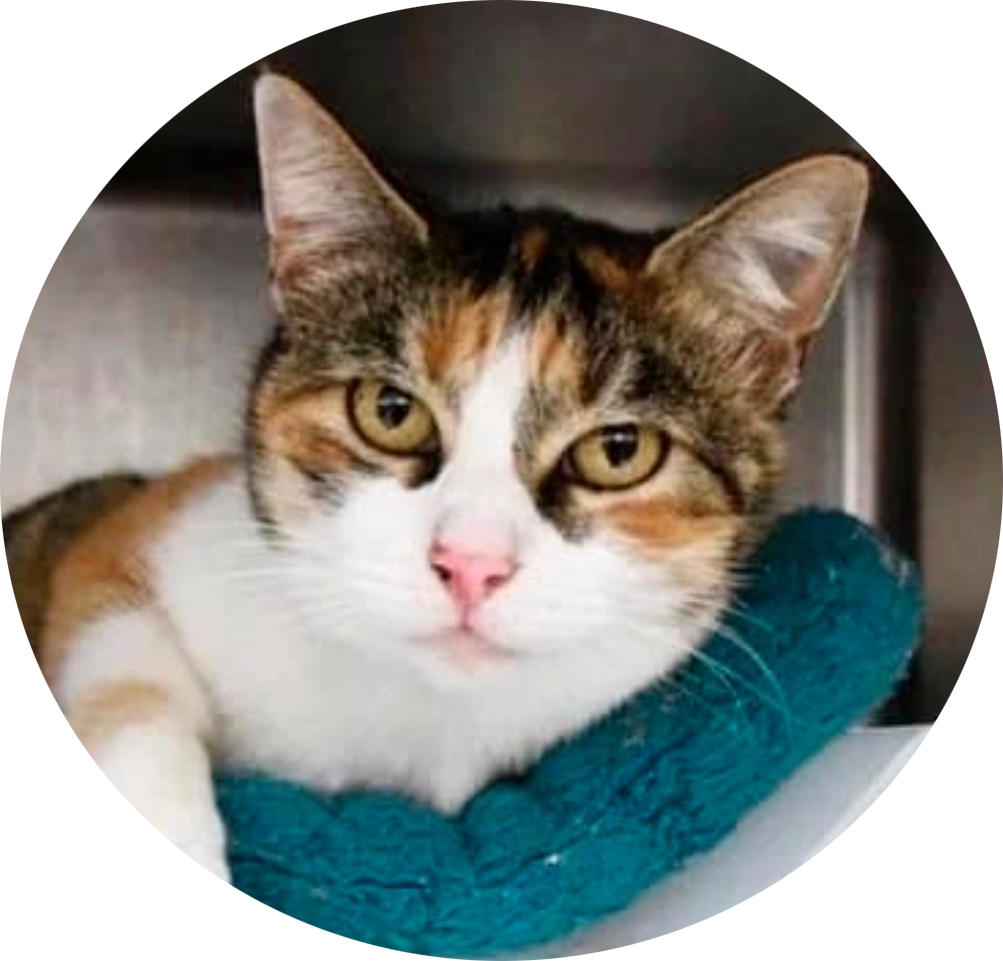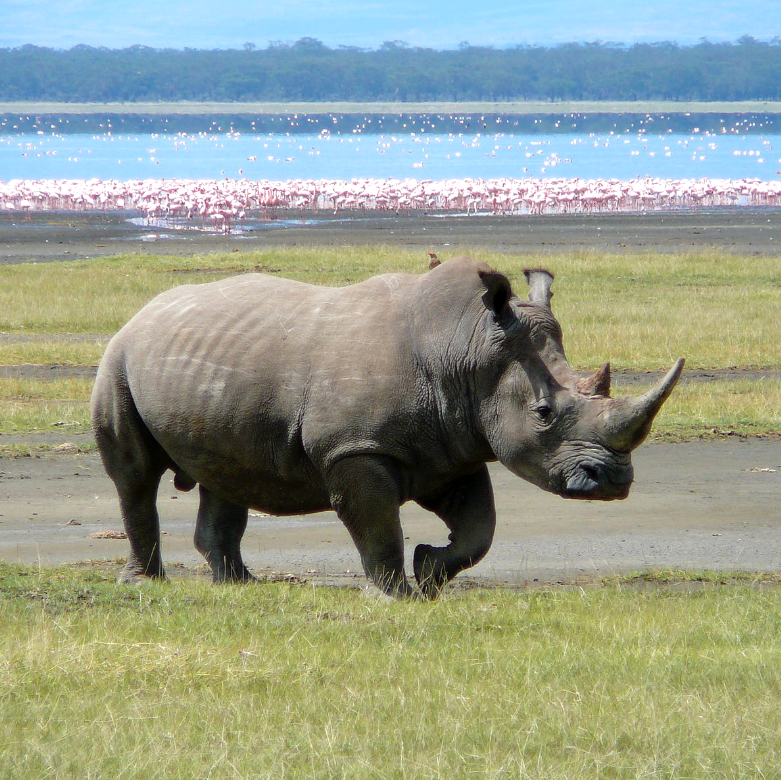Category: Uncategorized
- Clone from Genes Frozen 30 Years Ago Gives Endangered Species New Hope
- Scientists have taken a bold step in their efforts toward wildlife conservation. Elizabeth Ann, who was made from cells of Willa, another black-footed ferret who lived more than 30 years ago, is the first US endangered animal to be cloned. She was born with the help of a surrogate mother in December of 2020 and was revealed to the world in February of 2021. It is the scientists’ hope that she will one day be able to mate and might help to continue on this endangered species. The black-footed ferret is actually one of North Americas most endangered species. They were declared extinct in 1979, but after a rancher in Wyoming discovered a small population of the of 7 ferrets living on his land in 1981, a breeding program was started. All current black-footed ferrets are descended from this single population – something that poses unique challenges for recovering a species, as a lack of genetic diversity poses the increased risk of disease and abnormalities. This is precisely why Elizabeth Ann might be so important. Her genetic makeup could help to diversify the species. "Genomics revealed the genetic value that Willa could bring to her species," added Ryan Phelan, the executive director of conservation organization Revive & Restore, which was involved in the project. "But it was a commitment to seeing this species survive that has led to the successful birth of Elizabeth Ann. To see her now thriving ushers in a new era for her species and for conservation-dependent species everywhere. She is a win for biodiversity and for genetic rescue." Elizabeth Ann is not the first mammal to be cloned. Dolly the Sheep, who was born in 1996, was the first mammal to ever be cloned from the cells of an adult animal. Since Dolly’s birth, other mammals including dogs, cats, horses, and rabbits have been cloned, but, even still, researchers are not completely sure of the adverse side effects of cloning. Nonetheless, black-footed ferrets were added to the list of cloned animals, as they have been so close to extinction for so long. 120 ferrets were even vaccinated against COVID-19 as an extra protection for their species. Elizabeth Ann is just the first of many black-footed ferrets scientists are hoping to clone, as they continue to search for ways to help endangered populations reach their full potential.
- Worth the Walk
- In February, an unusual weather pattern hit the Pacific northwest, leaving Seattle covered in a foot of snow. But that didn’t stop 90-year-old Fran Goldman from getting her first dose of the COVID-19 vaccine. The Seattle resident took on the challenge and walked 6 miles round trip in the snow to her long-awaited appointment. “I have been calling to get an appointment anywhere, every morning, every afternoon and often I’ve been online at night,” Goldman said. According to the Seattle Times, Goldman’s daughter Ruth and a friend in Arizona, were both constantly making phone calls to help her schedule an appointment. Goldman was finally able to secure a time at the Seattle Children’s hospital and she was determined not to let some unexpected snow get in her way. The morning before her appointment, snow had already started covering the ground. Knowing that traveling by car would not be possible, Goldman decided that she would walk the 6-mile round trip journey to the hospital the next day. “My mother isn’t going to let a little snow stop her from getting the vaccine,” Ruth told the Seattle Times. “She was willing to walk however many miles there and back to get it. She is a really remarkable person who has the attitude of ‘You don’t let a little adversity get in your way.’ She’s someone who looks for solutions, not problems.” And that is exactly what Fran Goldman did. She layered up and headed out on her journey to the hospital. Her timing was impeccable. She arrived at the hospital only 5 minutes late, which meant she didn’t have to wait outside in the cold like she would have if she had gotten there too early. “It was not easy going, it was challenging,” Goldman said to the Seattle Times. But the challenge was worth it. Goldman has tried to fill her time during the pandemic by taking classes on Zoom and ordering groceries online. Now she is one step closer to her primary goal of being able to see her family and grandchildren again. “I can’t wait to be able to hold them,” she said. “I just want to feel more comfortable.”
- The Cat Came Back
- In January 2018, a deadly mudslide hit Montecito, CA, destroying homes and taking the lives of many. Josie Gower, a longtime resident, was one of the 23 victims, and Gower’s family assumed that her beloved pet cat, Patches, was also gone. But, in December, nearly three years after the tragic event, Gower’s family received some heartwarming news. Patches had been found alive less than a quarter of a mile from her former home and was brought to the Animal Shelter Assistance Program (ASAP) in Santa Barbara County as a stray. After scanning the calico’s microchip, the shelter was able to contact Gower’s partner, Norm Borgatello, who had lived with her before the mudslide hit and was shocked to learn that Patches was still alive. “We had kinda lost hope,” Briana Haigh, Gower’s daughter, told NPR. “It's a nice thing to hear that, after that many years, you can get a little bit of joy out of something that was quite horrific,” she added. Patches and Borgatello instantly recognized each other when they were reunited at the shelter on New Year’s Eve. “Though we don't know exactly what she's been doing with her life for the past three years, we can see that both Patches and Norm are thrilled to be reunited,” the shelter posted on Facebook. Thanks to the cat’s registered microchip and will to survive, Gower’s family has found some peace in reconnecting with their late mother’s furry friend. “I think it just warms the heart a bit…I know my mom would be really happy. And I think it is quite strange that it came about right before the three-year anniversary," said Haigh. The ASAP celebrated the reunion, posting on their Facebook page, “We are so grateful that, with the support of our amazing community, not only are we able to save lives, but we are often able to help these special reunions happen. As we see time and time again, a lost cat with a microchip has a much greater chance of being reunited with their family...no matter how, or for how long, they've been separated.”
- 220 million-year-old dinosaur footprint discovered by 4-year-old in Wales
- Lily and her father were walking along Barry Beach in Wales, when the four-year-old excitedly pointed out a 4-inch reptilian-looking imprint on one of the coastal rocks. When Lily returned home with pictures of the mysterious imprint, her grandmother suggested that they reach out to local experts about her finding. They soon learned that Lily had discovered a 220-million-year-old fossilized dinosaur footprint, which had been preserved in mud. Cindy Howells, the paleontology curator at the National Museum of Wales, told BBC that the extraordinarily detailed imprint was “the best specimen ever found on this beach.” According to NBC, the preserved footprint has been safely extracted and will soon be moved to the National Museum of Cardiff, where Lily’s name will be displayed as the “finder” of the artifact. Lily’s mother, Sally, said "We're going to keep encouraging exploring outside…It's great as it gets them really interested and the whole family can learn together." Barry Beach is located in Bendricks Bay and is an important site for paleontologists and special scientific research. Lily’s discovery has helped give scientists new insight into the muscles and joints of the prehistoric creature, which scientists estimate to have been about 30 inches tall and 8.2 feet long, according to Livescience. Similar footprints have only been found in the United States. In a statement from the National Museum of Wales, this remarkable discovery and impeccable preservation “may help scientists establish more about the actual structure of their feet as the preservation is clear enough to show the individual pads and even claw impressions.”
- Nia Dennis’ gymnastics routine celebrating Black excellence goes viral
- Nia Dennis, a gymnast at UCLA, is using her platform to make a difference. Inspired by the Black Lives Matter protests, the 21-year-old’s latest floor routine celebrating Black excellence has gone viral. Dennis tells The Lily that she wanted the routine to “be a celebration of everything [Black people] can do, everything we can overcome. Amid all the adversity and oppression we’ve been through, here we are.” Dennis’ perfectly executed routine (she scored a 9.95 out of 10) included songs by artists such as Kendrick Lamar, Beyonce, and Missy Elliot. Since lyrics are not permitted in the floor routines, Dennis used her skills as a gymnast to send her message. "There's not a lot of Black gymnasts so representation is very important and I wanted to bring the Black culture to the sport of gymnastics, especially given the reach that UCLA gymnastics gets in our platform," Dennis told PEOPLE. "I definitely wanted to capitalize and use it and really get the message that Black Lives Matter across." Dennis’ message was loud and clear. With over 10 million views of the video posted on UCLA’s Twitter page, her powerful and energetic routine quickly grabbed the attention of athletes and celebrities, including Michelle Obama, who re-tweeted the video with the caption, “Now that’s what I call fierce!” The athlete’s dedication and fearlessness to push boundaries within her sport sends an inspirational message to young people everywhere. When asked about the routine on The Ellen DeGeneres Show, Dennis says, “So this routine, I believe, is a reflection of everything that I am as a woman today. And I picked a lot of really influential artists, Black artists that had a huge impact in the Black community.”
- Snow Day for Pandas
- The recent snowfall that has covered large areas of the northeast has spurred playful snowball fights and sledding excursions, but humans are not the only ones enjoying the wintry weather. In a heartwarming video released by the National Zoo and Conservation Biology Institute, giant pandas, Mei Xiang and Tian Tian, were spotted playfully enjoying the fresh powder. The giant pandas are native to cold environments and remain active in their habitat at the Zoo during the winter months. After approximately three inches of snow covered the ground, Mei Xiang and Tian Tian went out to have some fun of their own. The adorable footage was captured on the Zoo’s live stream “panda cam.” One of the pandas is seen sliding down the slippery slopes on its back, while the other playfully rolled around in the snow with a ball. For giant panda cub, Xiao Qi Ji, the weather provided an introduction to something he had never seen before - snow. Keepers at the National Zoo said that the 5-month-old cub seemed slightly nervous at first, but he soon warmed up to the falling snowflakes. The cub’s first encounter with snow was a great success as Xiao Qi Ji took a nibble of a cub-size snowman made by a zookeeper. While the National Zoo is temporarily closed due to COVID-19, those who are interested in seeing what the animals are up to can check out the Zoo’s four live stream webcams, which offer footage of the giant pandas, naked mole rats, lions, and elephants. The Zoo also offers an educational activity packet for kids who want to learn more about the animals seen on the webcams. According to the Zoo’s website, giant pandas are native to central China and are considered a vulnerable species, with only 1,864 living in their native habitat. For over 40 years, the National Zoo has made great strides in saving giant pandas from extinction and has maintained one of the world’s leading panda conservation programs.
- No Rhinos Were Poached in Kenya Last Year – A Feat Not Achieved Since 1999
- For the first time in 21 years, Kenya has reported zero poaching of rhinos. This accomplishment is attributed widely to travel restrictions brought on by COVID-19, but other factors that contributed include actions on behalf of the government to work with local communities, anti-poaching operations, and other conservation efforts. Even with the country hitting this record low, they remain on high alert, as there has been a steady increase in bushmeat poaching and other crimes due to the pandemic. Southern Africa is home to 80% of all African rhinos on Earth. Rhinos as a species are deemed critically endangered by the World Wildlife Fund, with some predictions stating that this animal could reach extinction by 2036 if human intervention is not attempted. In 2017, Kenya had a rhino population of only 1,258. In 2018, the last male white rhino died, bringing the number of this subspecies in Kenya and across the world to just two. It has been said that close to 500 white rhinos could be found grazing across several East and Central African countries up until 1970. Poaching during this time reduced the population of white rhinos to 15 by 1980 and then to 32 by 2003. The remaining two females of this species were both born in captivity and are the sole remnant of hope that we might be able to bring these animals back – a startling reality brought on by the horrendous results of poaching. To add to the already amazing accomplishment seen with rhinos, Kenya also saw a record low number of elephants poached during 2020! In 2012, 384 elephants were poached, which is the highest recorded number to date. In 2020, only 11 elephants were poached. This incredible feat is one that has conservationist incredibly hopeful for the future – one which might continue to include wild rhinos (and elephants) freely roaming Kenya.
- Woman in Kenya Recycles Plastic into Bricks Stronger Than Concrete
- “I was tired being on the sidelines,” Nzambi Matee said in a statement to Reuters. A material engineer from Kenya, Matee found herself growing more and more impatient with the government’s lack of motivation to handle the plastic waste problem. Kenya is just one of many third world countries where plastic waste is leading to not only a human rights and child labor crisis, but also complete environmental devastation. While in a nation like the United States managing the plastic garbage falls to the government, in places like Kenya, it is the poorest individuals who must handle the waste. Matee took it upon herself to figure out a way to not only deal with the waste, but help the environment in the process. Her start-up, Gjenge Makers, transforms plastic waste into durable bricks that are 5 to 7 times stronger than concrete. Matee collects waste for free from factories and pays for additional waste from other recyclers. These plastics are a mix of both high- and low-density polyethylene products. An example of a high-density polyethylene would be a shampoo bottle, whereas a low-density polyethylene would be a plastic sandwich bag. She does not, however, work with polyethylene terephthalate products, most commonly known as plastic bottles. When these plastic materials arrive at Gjenge Makers, they are mixed with sand, heated, then compressed into bricks. From here, the bricks are sold depending on thickness and color to the surrounding area. Their most commonly purchased grey brick costs 850 Kenyan shillings or $7.70 USD per square meter. Matee designed the machines utilized at Gjenge Makers herself and, since its founding in 2017, has successfully recycled 20 tonnes of plastic. Matee’s determination to be the change she wishes to see can serve as an amazing inspiration to us all – getting off the sidelines is completely within our control and might lead to great discoveries.
- Rescue Dog Saves Man’s Life During Stroke
- “Who rescues who?” This is a question often pondered by animal owners, but in the case of Brian Myers and his German Shepard, Sadie, it takes on a whole new meaning. The New Jersey man rescued his “gentle giant,” Sadie, in September of 2020 from the Ramapo-Bergen Animal Refuge after her previous owners surrendered her. In late January 2021, however, Myers collapsed upon getting out of bed. Little did he know he had suffered a stroke. Enter the story’s hero: an amazing German Shepard. Sadie could sense her owner was in distress and laid down next to him, licking his face in an attempt to wake him. It was at this moment that Myers thought he might be able to use Sadie as a counter weight to help get himself off the ground. When he grabbed for her collar, it seemed that the dog knew exactly what to do. She took Myers directly to his cellphone where he could dial for help – an act that likely saved his life. On Tuesday, February 9th, Myers was released from rehab and reunited with his loyal companion. Sadie was so excited to see her owner, she licked his face to the point where his mask fell off. Ramapo-Bergen Animal Refuge, inspired by this team’s story, is paying it forward by helping to support Sadie’s future medical needs through donations. Sadie is also set to be honored with a Heroic Dog Award from PETA – a much deserved honor for an incredible dog! "Sadie's intelligence and tenacity saved Brian's life," PETA Vice President Colleen O'Brien said. "Her heroism reminds us that many loving, dedicated dogs are waiting in shelters for a family to join, and PETA encourages anyone with the ability and resources to care for an animal to adopt one from a local shelter." “Brian gave Sadie a second chance at life, adopting Sadie and welcoming her home," Ramapo-Bergen Animal Refuge said. "This time, Sadie gave Brian a second chance at life."
- Researchers Have Found a Way For Spinach To Send Us Emails, And It Could Help Solve Climate Change
- You read that right – scientists are now in communication with spinach. Yes, the leafy green plant that so many children struggle to stomach has recently been gifted the ability to send emails, but maybe not in the way you would expect. MIT researchers have engineered the roots of spinach plants to contain nanosensors, capable of detecting explosives and man-man chemicals. When detected, these sensors send a signal to an infrared camera that then shoots out an email alert. Ok, so maybe spinach isn’t sending emails asking about our day, but this ability to utilize the natural sensitivity of plants to detect harmful compounds is an incredible step towards a more informed world. Breaking this “plant/human” communication barrier is one way scientists might actually be able to track and attempt to mitigate climate change. “Plants are very good analytical chemists,” explains Professor Michael Strano, who led the research, in a statement to EuroNews. “They have an extensive root network in the soil, are constantly sampling groundwater, and have a way to self-power the transport of that water up into the leaves.” Plants are capable of knowing environmental changes much earlier than humans. They can predict if there is going to be a drought and, even more amazingly, can detect even the smallest changes in soil or water properties. Being able to harness this ability and have plants send alerts about potentially dangerous changes might give us an edge over drastic climate changes before they occur. So, even though spinach might not be emailing us in the way we would expect, this plant is working to bring us one step closer to a healthier world.









